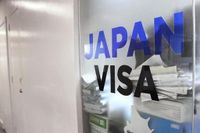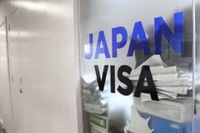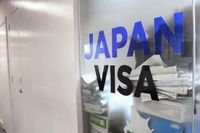The growth in the number of visitors to Japan from the Philippines has recently hit a sharp downturn, as confirmed by the Japan National Tourism Agency on March 19, 2025. In February, the number of tourists coming from the Philippines reached an estimated 66,700, marking a modest increase of only 2.3% compared to February of the previous year. This follows an impressive 27.2% increase recorded in January and a substantial 30.1% increase seen from October to December 2024.
Several factors contributed to this slowdown. The Philippine Embassy in Japan has imposed restrictions on the processing of tourism visas, which significantly affected the ability of would-be travelers to obtain necessary documentation. The embassy also acknowledged delays in the issuance of visas as a critical issue impacting the potential influx of Filipino visitors.
In an effort to address these challenges, the embassy has announced a shift to a new visa center system that will consolidate the visa application process. Effective April 7, 2025, this system will manage all aspects of visa procedures, excluding the actual screening of applications. However, it's worth noting that officials have not provided a clear timeline regarding whether this change will expedite the processing of visas, leaving many uncertain about its potential impact on travel demand.
According to the Japan National Tourism Agency's data, the increased number of travelers from the Philippines has been previously notable. For instance, in January 2025, tourism from the Philippines surged by 27.2%, a significant rebound compared to earlier months. Likewise, the quarterly figures from October to December 2024 indicated a 30.1% rise in arrivals compared to the same period in 2023.
The agency’s spokesperson remarked, “The temporary delays in visa issuance have had a noticeable impact.” This statement underscores the challenges faced by potential travelers due to bureaucratic constraints and the pressing need for streamlined processes to support tourism growth.
To facilitate easier access to visa applications, the embassy is reducing the number of travel agencies that serve as visa application counters from seven to just one. This change means that travelers will have to navigate their applications through a single agency located in five key areas: Manila, Cebu, and Davao. While this tailored approach aims to improve procedural efficiency, there remains a risk that the transition may take longer than anticipated, thus potentially further dampening tourism interest.
The tourism landscape between the Philippines and Japan has generally been robust, with many Filipinos seeking to visit for business, leisure, and familial reasons. Despite the current slowdown, the framework for travel remains promising, provided that the issues surrounding visa processing are adequately resolved.
The Japan National Tourism Agency continues to analyze trends in tourism metrics closely, emphasizing the importance of efficient visa processing to sustaining and enhancing visitor flow. As both nations work to navigate this temporary setback, stakeholders are keenly aware of the implications for their economies, particularly as tourism is a significant contributor to the growth of both countries.
In light of the current situation, both travelers and tourism agencies remain hopeful for an improved process under the upcoming visa center system. However, until such a transition is fully realized and implemented, many potential travelers may still face uncertainty, affecting overall travel dynamics between the Philippines and Japan.
This situation highlights not only the bureaucratic challenges that can impact international travel but also emphasizes the importance of swift and effective communication between governmental bodies and the tourism sector in addressing these pressing issues.
As the landscape evolves, stakeholders from both the Philippines and Japan are tasked with ensuring that travelers can have the most seamless experience when planning their visits. Moving forward, the success or failure of the new visa center system will be a critical determinant in the recovery of travel momentum, and it remains to be seen how quickly and effectively it can adapt to the rising demands of travelers looking to explore Japan.





